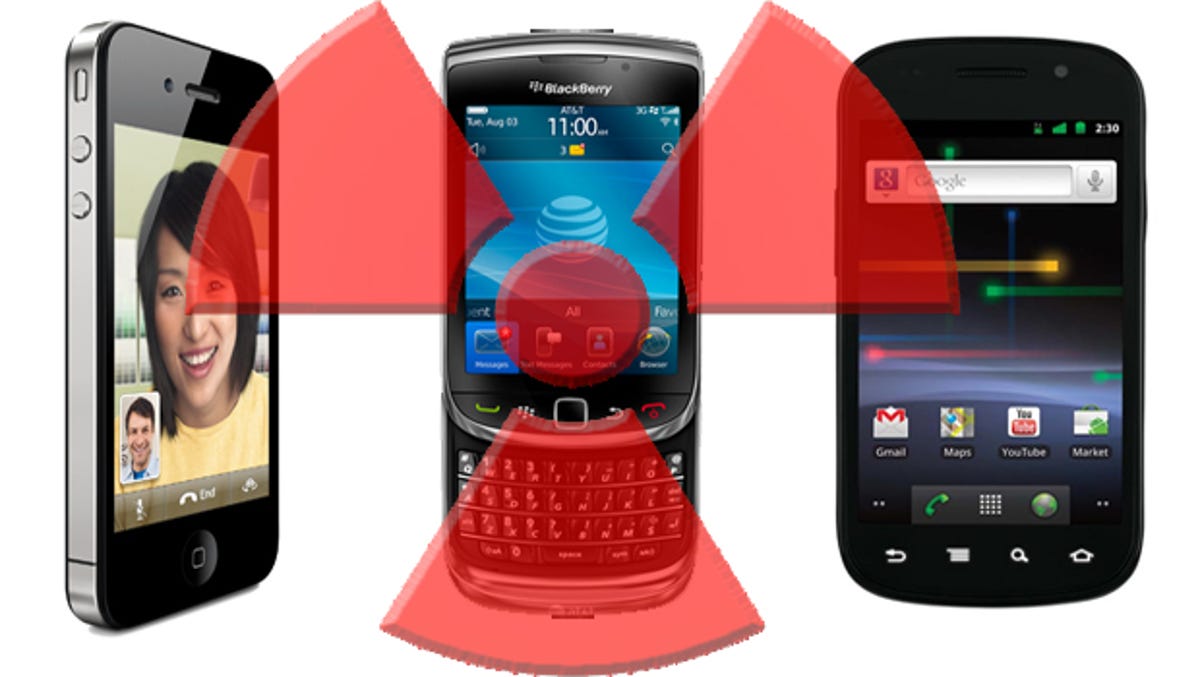
Is your favourite phone melting your mind or giving you cancer? According to the latest research, almost certainly not. For your peace of mind though, we looked at the radiation levels of some of the top phones in the UK and ranked them accordingly.
In order to monitor the levels of radiation we’re exposed to, the government requests that all phones are tested to determine their specific absorption rate (SAR) value. The figure represents how much radiation is absorbed by the body’s tissue, in Watts per kilogram (W/kg). The higher the number, the more radiation absorbed.
As inert as a well-washed pebble, and with the lowest score of our phones is the popular Samsung Galaxy S 2, with HTC’s Sensation only just behind at 0.358 W/kg.
HTC’s Incredible scored 0.876W/kg, outdoing the iPhone 4, which notched a relatively high rating of 1.14W/kg.
Bottom of the heap was the Sony Ericsson Xperia X10 Mini Pro. Owners of the phone receive a tall serving of 1.61W/kg — the highest of all the phones we’ve reviewed this year. This is followed very closely by the Acer beTouch E210 with 1.6W/kg.
Using a mobile poses an unknown risk of causing cancer, according to the World Health Organisation. Mobile phone use is classed as a 2B carcinogen, which sounds scary until you find out that doing carpentry or drinking coffee presents an equal risk. Basically, it might do you some harm over a long period, but no one has produced any definitive proof either way.
The max level permitted within Europe is 2.0W/kg, and the phones we’ve reviewed this year didn’t come anywhere near that figure, so we don’t think you have anything to worry about whatever phone you choose. We’ve listed the maximum SAR levels for each phone below. The coolest are at the top, the hottest at the bottom.
Manufacturers tend to list their phones’ SAR ratings on their websites (here are the sites for Nokia, Sony Ericsson, Samsung and Motorola). When we couldn’t find it on the company site we scoured the Internet for another source.
The results below are colour-coded. The SAR levels in green are from the phone manufacturers’ websites, while red results are from comparison websites that list all of the phones’ specs that appear on their packaging, but should be considered unofficial.
We’ve also included two US ratings in the table, where a European result wasn’t available. Although Americans use a different radiation testing method, the results aren’t incredibly dissimilar. They test phones for SAR at both head and waist height, whereas here in Europe we just test the phone at head height.
So you should take the red and US results with a pinch of salt — they aren’t the official European SAR level, so the actual rating may vary slightly.
Update: We’ve added several more phones to the list in response to reader requests. We previously published the values for the Sony Ericsson Xperia X10 Mini and Mini pro under the wrong names; this has been corrected.



